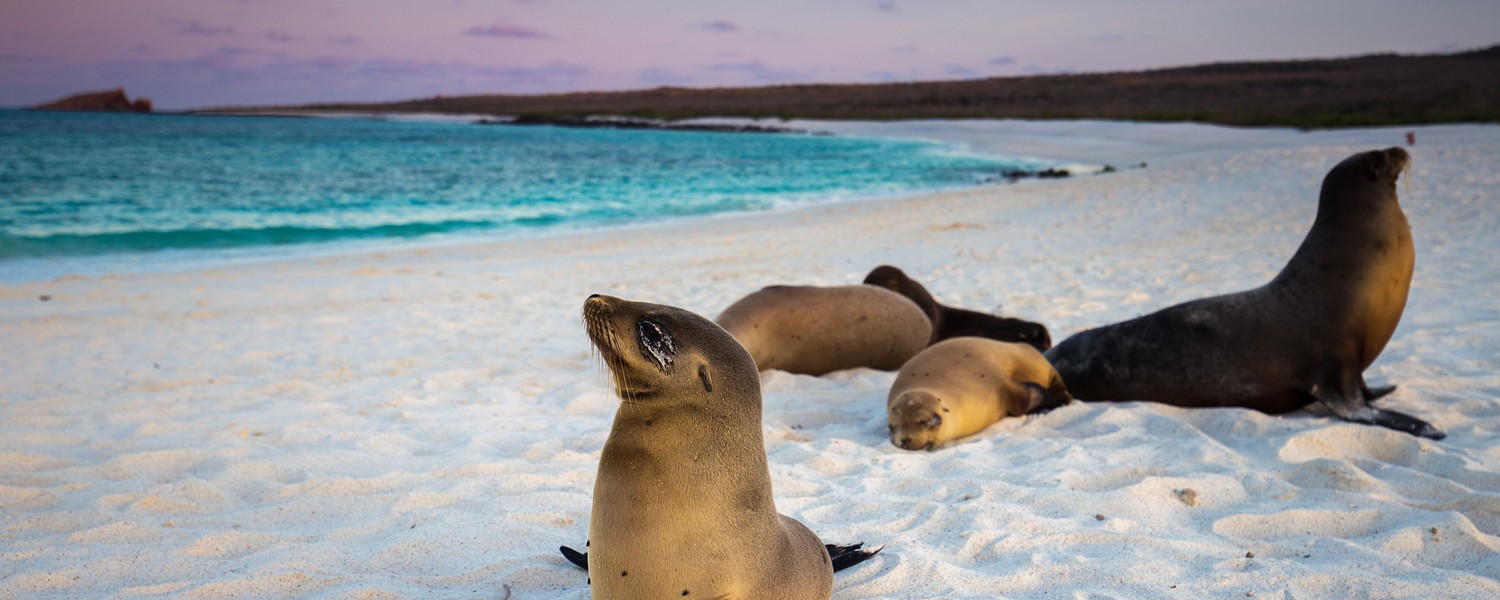
Provided by:
Brendan van Son/Shutterstock.com

Our travel guides are free to read and explore online. If you want to get your own copy, the full travel guide for this destination is available to you offline* to bring along anywhere or print for your trip.
*this will be downloaded as a PDF.Price
€4,95
The Islands
The guide was updated:
The 18 islands that comprise the Galapagos lie almost 1,000 kilometres off the coast of Ecuador, directly on the equator, with some islands in the northern and others in the southern hemisphere. The landscape is mostly rocky and barren, but fascinating and beautiful in its own way. The islands are volcanic, and thus geologically very interesting, and some of the youngest islands are still in the formation process.
A whopping 97.5% of the archipelago’s land area has been made a national park, and the 70,000 square kilometres of ocean surrounding the islands have been declared a marine reserve, the world’s largest after the Great Barrier Reef in Australia, as well as a whale sanctuary. The Galapagos Islands have also been recognised as a World Heritage Site by UNESCO and a biosphere reserve. However, the small area that is inhabited by humans – on the five islands of Baltra, Floreana, Isabela, San Cristobal and Santa Cruz – is surprisingly developed, making visits easy and comfortable.
Of course, the biggest draw to these incredible islands is the wildlife. Many of the islands’ species are endemic, and the lack of natural predators has caused them to evolve utterly without fear of visitors, meaning that tourists are thus able to approach and interact with the playful penguins and seals, the friendly marine iguanas and Darwin’s finches, the colourful blue-footed boobies, magnificent frigatebirds and sally lightfoot crabs, and of course, the famed giant Galapagos tortoise.
But human development on the islands is having negative effects on the animals as well as the islands themselves. Habitats are being threatened through the introduction of alien species that are taking over or destroying the conditions necessary for native wildlife to thrive. Strict controls are thus being enacted – visitors must be accompanied by guides and are expected to treat the islands and their animal residents with utmost care. A small price to pay to experience these unique and mesmerising islands.
A whopping 97.5% of the archipelago’s land area has been made a national park, and the 70,000 square kilometres of ocean surrounding the islands have been declared a marine reserve, the world’s largest after the Great Barrier Reef in Australia, as well as a whale sanctuary. The Galapagos Islands have also been recognised as a World Heritage Site by UNESCO and a biosphere reserve. However, the small area that is inhabited by humans – on the five islands of Baltra, Floreana, Isabela, San Cristobal and Santa Cruz – is surprisingly developed, making visits easy and comfortable.
Of course, the biggest draw to these incredible islands is the wildlife. Many of the islands’ species are endemic, and the lack of natural predators has caused them to evolve utterly without fear of visitors, meaning that tourists are thus able to approach and interact with the playful penguins and seals, the friendly marine iguanas and Darwin’s finches, the colourful blue-footed boobies, magnificent frigatebirds and sally lightfoot crabs, and of course, the famed giant Galapagos tortoise.
But human development on the islands is having negative effects on the animals as well as the islands themselves. Habitats are being threatened through the introduction of alien species that are taking over or destroying the conditions necessary for native wildlife to thrive. Strict controls are thus being enacted – visitors must be accompanied by guides and are expected to treat the islands and their animal residents with utmost care. A small price to pay to experience these unique and mesmerising islands.


